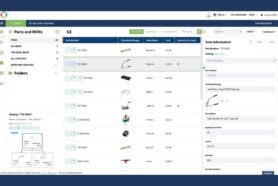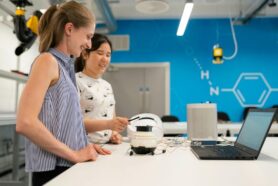
One of the goals of manufacturers is to bring down the cost of goods sold (COGS). Throughout this process, you can have cost-down initiatives to bring down costs. But how do you know if your supplier is charging too much for the parts?
Whether you are sourcing everything from a contract manufacturer, or if you are sourcing each individual item and assembling it in-house, understanding the costs of each part is important. If you are able to decrease these costs then you can run a more profitable business. Increasing these costs can also have negative effects.
In this post, we will look at how you can confirm if a supplier is overcharging you for a part and what you should do about it.
Understand your Current Costs
Before you start accusing your supplier of overcharging you, manufacturers should first understand their current costs.
If you have 100 parts on your Bill of Materials (BOM), then you should have 100 part quotes, including assembly and quality control costs. So, each item in the BOM should have a cost associated with it. Also, you can go more granular. You can request the costs to be broken down into each process.
For example, if you’re fabricating a CNC part, you can ask for the following costs:
- Material Cost
- Fabricating Cost
- Secondary Process Cost
- Coating Cost
- Transportation and Logistics Cost
In addition, it would help to understand the different kinds of costs and what they mean to you. There are two production costs that you’ll need to calculate.
First, direct costs, are costs that add value to the product. Think of labor and raw materials. Both of these items are being used to build your product and are improving the value of your product.
Secondly, you have indirect costs. These costs do not necessarily add value to the product but they are still necessary for the production of your product. Manufacturing overhead and taxes are two examples of indirect costs.
If your supplier’s overhead costs are high then it can tell you something about the supplier. Perhaps they don’t have many orders so their overhead costs are high. A high overhead cost can also show the facility is mismanaged. You’ll only know a high overhead cost if you are able to compare these costs with other suppliers.
Approaching Other Suppliers
After you understand your costs, you can start to approach other suppliers. Start with the low-hanging fruit. For example, if you are working with a contract manufacturer and they don’t have expertise in electronics then you can start with sourcing new PCB suppliers.
You will want to treat this experience as if you are evaluating and choosing suppliers for the first time. To start this process, you’ll need to start the request for quotation (RFQ) steps with all suppliers you have identified as a possible fit to make your part.
The point of this exercise is not to switch suppliers. It’s to see whether or not your current supplier is overcharging you. However, if you are looking to switch suppliers then the process is similar. Oftentimes, having visibility that your supplier is overcharging you is step one to changing your supplier.
To ensure consistency and accuracy, you’ll need to make sure that both suppliers have the same product data. It wouldn’t make sense to have your current supplier quote version B and your new supplier version D.
Decision Time
Once you have provided the other suppliers with the product data, you should have received quotes for each part from each supplier. With these quotes, you can quickly see whether or not you are being overcharged.
After you have this information, you can decide your next steps. Do you switch suppliers or do you try to negotiate with your current supplier? This is the choice you need to make.
Also, this should go without saying. But don’t make a decision on which supplier to choose based solely on their price. There are many other factors that should be considered when analyzing the right supplier(s) for you.
How To Start This Process?
If you are looking to gain a competitive advantage then you’ll need to first look at how you manage your product data. If your product data is messy then you’ll need to create a process of how you improve the organization and distribution of your data.
Manufacturers have managed most of this using spreadsheets and complied the extra product information (drawings, spec sheets, assembly instructions, quality reports, etc…) in folders that are then emailed to suppliers and other team members. While the familiar look is appealing, it creates data silos that disconnect you from the rest of your team.
To start this process, you need to create a single source of truth.
OpenBOM is a cloud-based PDM & PLM platform to manage your engineering and manufacturing data. Companies from startups to Fortune 500s use OpenBOM to create a centralized database to bring in, store and manage their manufacturing data. With this infrastructure, users also use OpenBOM to streamline both their change management and PO processes.
If you need to improve the way you manage your data and processes, share data instantly, or to collaborate with contractors and suppliers. contact us today for a free consultation.
Regards,
Jared Haw
Join our newsletter to receive a weekly portion of news, articles, and tips about OpenBOM and our community.










